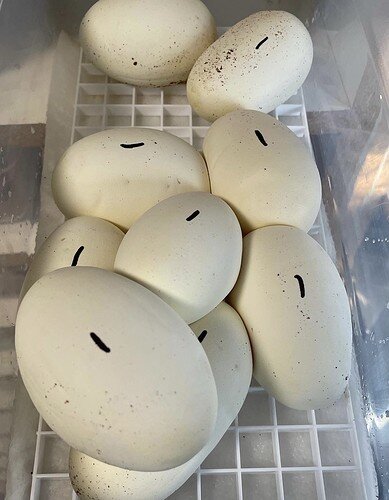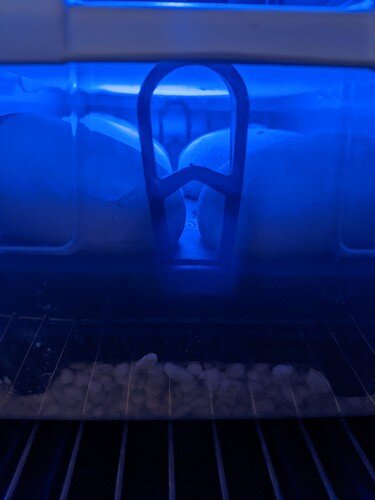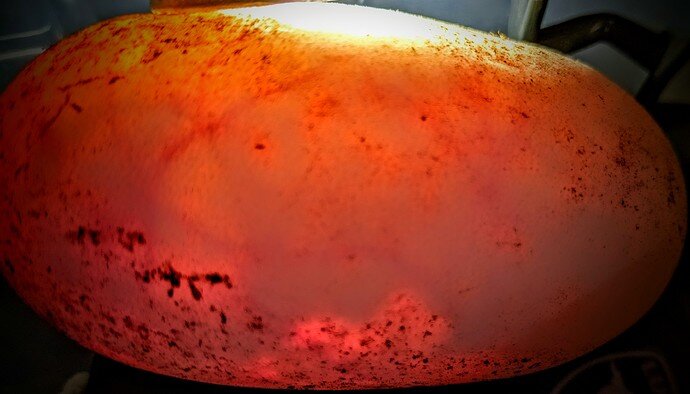Eventually, I’d like to organize several other threads similar to this for other snakes and reptiles, but for now, what I’d like to talk about here is all related to experiences in breeding, step to step from breeding to ovulation, laying eggs, incubation, and hatching. And while doing research on the forums here, I more than occasionally see what can be described as one sided information, or the good without the bad, and not always fully explained, and when something is brought up in a comparison but not really visualized, such as with photos or other types of examples shown, we get a great example of what “good” is, but I’ve not seen a great many of examples of when things have gone wrong, or alternative explanations to circumstances. I believe that “working examples” of mishap are important, not only to document for yourself, in building your own experience and your own wealth of knowledge, but to show anyone who hasn’t put their foot in the proverbial bear trap yet what the foot looks and feels like if you do, so to speak. Just for instance, there’s this great thread on Easy, Fool Proof Egg Setup and it gives some of the best examples of things like what good eggs, good candling, good incubation methods and good incubation box methods all are and what they can look like, with a lot of excellent working examples of when things go right. However, as useful as I found this, and I’m sure many others do, too, while it and other threads that give lots of good info on what positive examples look like are great for knowing you’re doing something right, what about when things aren’t going right? I’d like to see some examples of things like bad clutches (such as proper/poor egg form, other factors), bad candling (what poor veins/dead eggs look like, slugs etc), incubator failures (incubators that failed, and why), poor incubation practice (egg container/hatching media errors/issues, improper handling), hatching/cutting mishaps (issues and possible deformities with examples and explanations), poor equipment to use, and whatever else anyone can think to include in this sort of category. Mistakes and failure is a natural part of doing anything, and this isn’t to highlight any of those mistakes, mishaps or any of the breeders who may have made them or experienced them, it’s about learning from them and moving forward with a knowledge base for others to walk around the bear traps with, whenever possible. So, thank you all for any of your contributions, I look forward to seeing what we can gather here.
My only concern is, they’re stuck together, and I have one touching the lid, should I be concerned about this, and can I safely pull the eggs apart or do they have to stay together like this? @t_h_wyman @saleengrinch @ballornothing @trnreptiles
Leave them all stuck together becase you don’t want to accidentally tear one trying to separate. I would just get rid of the black pastic thing and set them right on the bedding. Then they won’t be touching the lid
I agree, leave them all together. To avoid one touching the lid (which is a problem) you can decrease the amount of perlite or remove the black egg holder.
I’m going to be the odd man out here. I will separate my eggs so I can evenly space them out. They will pull apart easily if the have been recently laid. Just be careful when doing it. I will leave them if they aren’t on top of each other and connected on the sides. I like to use my mix exactly the same every time so don’t like to have to remove any of it to make eggs fit. And I never leave my eggs directly on the vermiculite/perilite. Which ever way you decide the key is to do it now and leave them alone!
How old would you consider recently laid? Do you think they would still pull apart easy after an hour, few hours, day, etc? When removing eggs do you just pull them apart or do you try putting something in between the eggs and wedging them apart?
Within a day? I know when my females are laying so as soon as they are done I pull the eggs.
I use my hands they will pull apart a lot easier than you would think.
And I don’t candle eggs just toss obvious slugs and incubate everything else. Right into the tub and into incubator I personally minimize handling.
I do it both ways depending how how easily they fit in the box. Here are two I pulled last week. I marked the one clutch to separate it and then ended up leaving it in a pile as soon as I took off the ones that kept it from fitting. The other were barely adhered so I split them up. I do what’s most convenient.
Edit: About 2-3 days before they pip you can separate them easily if you choose to.
That was actually fairly simple, @saleengrinch, thanks for the help with that. Unless I missed it yesterday somehow, they’re from early today, I caught them about midday, they rolled apart fairly easy, just took a little patience. For anyone not familiar with the process, or in case I missed something and made a mistake (please, let me know), the eggs were stuck together but I was able to roll them back and forth on each other until they seperated.
They look fine 
What does everyone do with their slugs?
Most throw them away but boob eggs get incubated. Some feed them to monitors as snacks.
Wow this is a great thread!
This year was our first 2 clutches. We did LOTS of research prior and although there was info about slugs and snakes not surviving, but not enough info 
Personally I would try to keep them together, by removing a small amount of incubation medium.
That being said the egg touching the roof is bad so if I wasn’t able to solve it this way, I’d separate the top egg rather than taking the tray out as I feel the test is important.
Looks like you did a great job with separating the eggs👍
We had a couple of slugs, which we still incubated but kept a close eye & nose on, plus kept them separate from the viable eggs. We candled them but seeing as it was our first year, we thought we’d rather incubate and remove later, than be wrong. We was correct and we did remove the slugs later in the incubation period, I think we will still continue to do this for now.
I do have a tip which might be useful to others, we found that putting the egg box on a small slope, meant any condensation would drip in a certain location, rather than anywhere from the lid and possibly landing on the eggs
This is a smart tip!
Looks like it got situated, but yeah I usually pull apart my eggs since I’m on top of watching my females when they’re about to lay eggs and can pull them from the female immediately.
Perks of working from home and having all the time in the world for the snakes 
No problem! Always happy to help! Wish you the best results with your clutch!
I see the veins! Congratulations and good luck.














